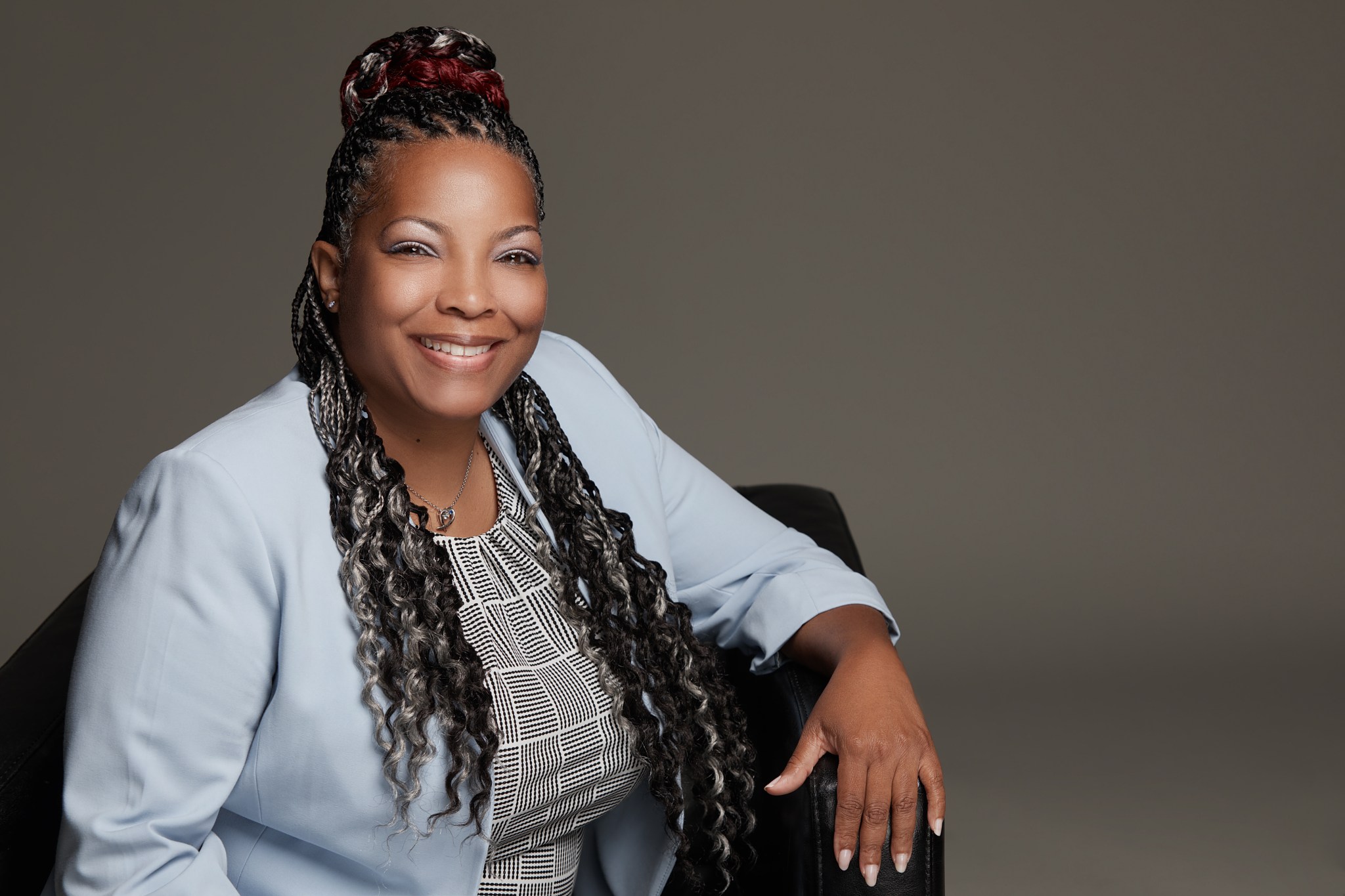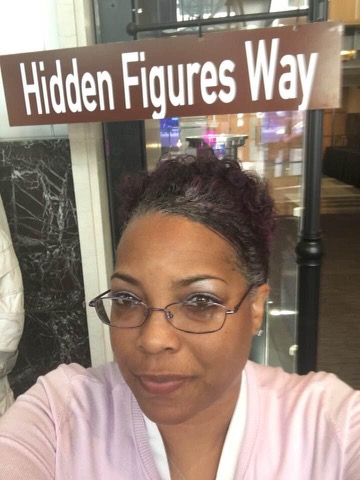When it comes to transforming obstacles into opportunities, it’s all about a “grow where you’re planted” mentality, says Shawnta M. Ball, a program support specialist in Goddard’s education office.
Name: Shawnta M. Ball
Title: Program Support Specialist
Formal Job Classification: Administrative Support Assistant
Organization: Office of STEM Engagement (OSTEM, Code 160)
How would you describe your job at Goddard?
I contribute to the vitality of our office by providing crucial support to various programs. I joined Goddard in March 2020 and witnessed the organization undergo significant changes. Currently, we are in a phase of revitalization following the challenges posed by the pandemic. We now have a team working enthusiastically to revive some of the older programs.
Among our initiatives is the resurgence of K-12 programs, where we engage with schools in our region. My focus primarily involves collaborating with high schools and middle schools, reaching out to instill the NASA way of thinking and inspiring students to see the impact of a STEM education. We are dedicated to fostering a mindset that emphasizes working at NASA in science, technology, engineering, and math roles beyond being an astronaut.
Additionally, I serve as the liaison for diversity, equity, inclusion, and accessibility between NASA’s Office of Diversity and Equal Opportunity and OSTEM. Our goal is to ensure that our processes embrace everyone, irrespective of their background or identity. I act as the bridge, pulling together diverse perspectives and information to create a more inclusive work environment.
I’m also actively involved in two solicitations — one for Minority University Research and Education Project (MUREP) OCEAN related projects, and another focused on Data Science Equity, Access and Priority (DEAP). We collaborate with faculty to award research grants, reaching out to individuals who might not typically hear about these opportunities but possess the skills and potential to excel.
What path led you to this role?
My journey with NASA started in 2002, and I arrived at Goddard in 2020 after being part of the Office of STEM Engagement at headquarters in Washington. Embarking on my career in the government at the age of 16, I faced a unique and early entry into the professional world. Despite my youth, I embraced the opportunities presented to me and took on a series of diverse assignments within the government sector. This journey was marked by a steadfast commitment to the philosophy of “growing where I was planted.”
In practical terms, this philosophy implies a dedication to making the most of the current circumstances and roles, regardless of their initial nature or perceived limitations. Instead of constantly seeking new environments, I focused on developing my skills, gaining valuable experiences, and contributing meaningfully to each position I held. This approach allowed me to extract valuable lessons and skills from every assignment, fostering personal and professional growth in unexpected ways.
The belief in “growing where I was planted” also speaks to resilience and adaptability. Rather than succumbing to challenges or setbacks, I viewed them as opportunities to learn and adapt. This mindset not only helped me navigate the complexities of working in the government but also positioned me to thrive in a variety of roles over the years.
As a result of this philosophy, I built a foundation of skills, knowledge, and adaptability that eventually led me to my current role at Goddard. Each assignment, whether seemingly small or significant, played a crucial role in shaping my career trajectory and preparing me for the challenges and responsibilities I now undertake in supporting programs and initiatives at Goddard.
What’s the most exciting or interesting part of working at NASA?
Being in a position that involves interactions with celebrities has been one of the most enjoyable aspects of my work. It provides a unique glimpse into the individuals who contribute to TV programs, movies, and media that showcase NASA’s endeavors towards our society’s forward progression. During my early days, I had the fascinating role of booking meetings that involved notable figures, and although the interaction was swift, the experience of seeing them in person was truly thrilling.
While working in the administrator’s office at headquarters, I had the privilege of witnessing the arrival of news reporters, city mayors, congressmen and women, and astronauts who came to meet with the administrator. Sitting in anticipation, I played a behind-the-scenes role, having foreknowledge of their visits and assisting in the planning process. Although my involvement was indirect, the opportunity to be in proximity to these space explorers and others and to play a part in coordinating their interactions was both rewarding and awe-inspiring.
I’ve had the privilege to meet and greet famous people and directly supported three astronaut-turned-supervisors. However, one standout memory involves meeting Nichelle Nichols, who played Uhura on “Star Trek,” at the final space shuttle launch. STS-135, the last flight of the orbiter Atlantis, lifted off from Launch Pad 39A at NASA’s Kennedy Space Center in Florida on July 8, 2011. I will always be grateful to Ms. Nichols for the real-life role she played at NASA, which was to recruit minority and female astronauts and personnel for the agency’s Space Shuttle Program.
The sheer thought of being in the company of someone of her stature and witnessing firsthand the intersection of entertainment and NASA’s mission left a lasting impression. These encounters not only added a layer of excitement to my role but also reinforced the significance of the work we do at NASA, captivating the attention of influential figures who contribute to sharing our stories with the world.
By Marta Hill
NASA’s Goddard Space Flight Center, Greenbelt, Md.
Conversations With Goddard is a collection of Q&A profiles highlighting the breadth and depth of NASA’s Goddard Space Flight Center’s talented and diverse workforce. The Conversations have been published twice a month on average since May 2011. Read past editions on Goddard’s “Our People” webpage.




























